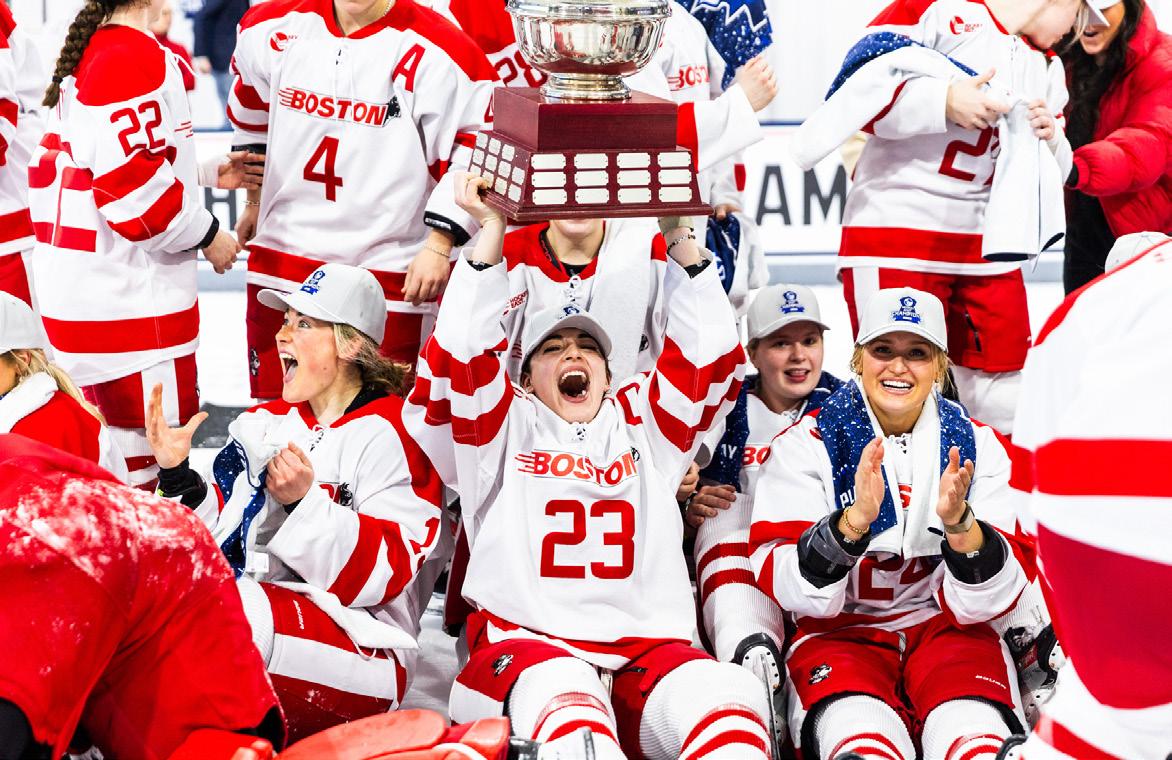




BY MARY GOETZ DFP Writer
Final exams and graduation ceremonies at Boston University were canceled due to Vietnam War protests May 6, 1970 — the same day The Daily Free Press released its first-ever issue.
“Vandals broke into the [Dahod Family Alumni Center at the Castle], spray painted the walls and furniture, and splashed wine across the carpet,” wrote The Daily Free Press Editor-in-Chief Gene Johnson in a 1998 “Letter From the Editor,” reflecting on the paper’s beginnings.
“Thousands of antiwar protesters swarmed Nickerson Field,” Johnson wrote.
Almost 55 years later, protests on campus haven’t slowed down.
More than 100 attendees gathered at Marsh Plaza March 28 before marching down Commonwealth Avenue chanting “Boston University, we know what side you’re on. Remember South Africa, remember Vietnam,” referencing former student protests in the 1960s and 1980s.
BU saw some of the largest anti-war protests in the ‘60s and ‘70s, followed by anti-apartheid protests in the ‘80s.
In 1985, about 200 students attended the “Rally for Justice at Boston University” at Marsh Plaza, protesting divestiture in South Africa and President Ronald Reagan’s budget cuts.
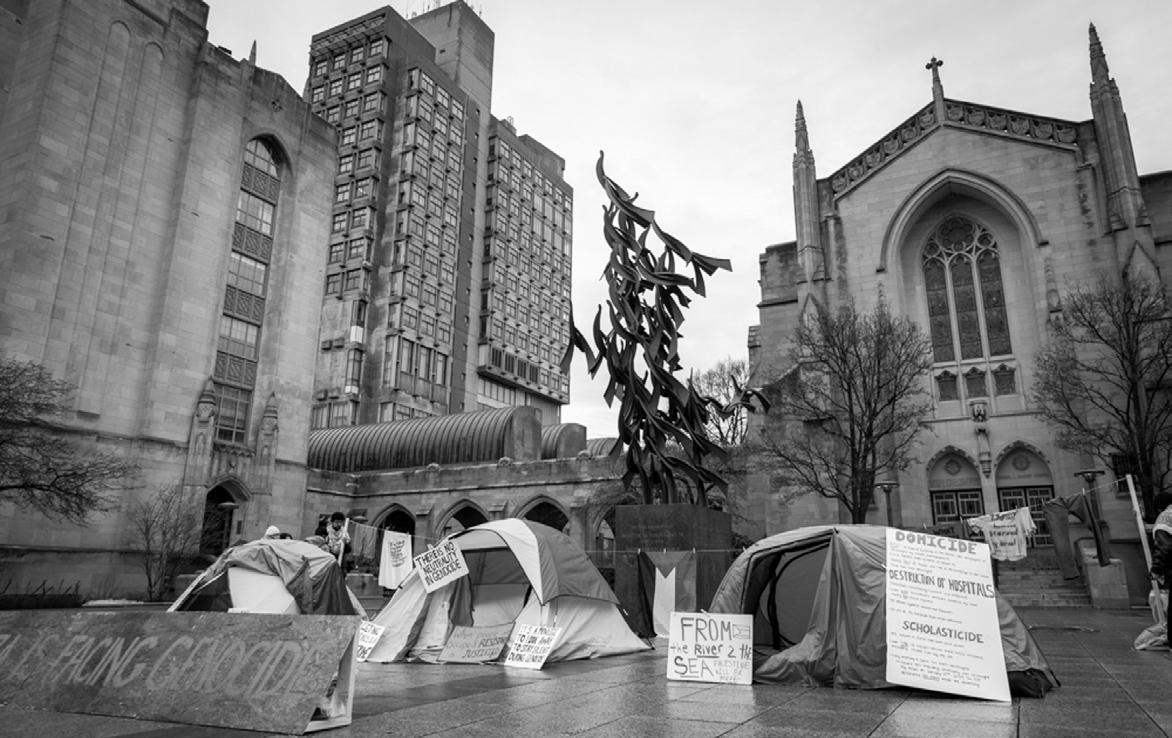
The following year, 11 BU students were arrested at the George Sherman Union for building a “shanty” to raise awareness of South African apartheid.
“Things like student protest over what their universities are choosing to invest in is something that’s a perennial thing,” said Jason Pramas.
Pramas attended BU from September 1984 to June 1986 until he was “thrown out” for activist work against South African apartheid, he said.
Cheryl Townsend Gilkes, a former assistant professor of sociology at BU who spoke at an April 10, 1985, anti-apartheid rally, said student activism is more “complex” now, partly due to institutional response.
“Things have changed over time,” Gilkes said. “The impact of international students, the burgeoning of various kinds of cultural studies that can be attacked and also looked at as a resource on the part of students.
A whole range of differences between what happened in the late 1960s and what happens now.”
Zachary Bos, former BU student and current president of UAW Local 2324, the union representing higher education staff at BU, said he has observed a “fundamental shift” in campus activism.
“Thanks to telecommunications, we could mediate the relationships we chose, and that became a feedback loop where the campus world and the social world diverged and they no longer overlap anywhere near as powerfully,” Bos said. “Change in the way that campus life takes place coincides with a very visible change in campus activism and campus media.”
Pramas said he remembers passing out physical leaflets
and hanging posters to advertise demonstrations when he was a student.
“We were talking to people more directly,” he said.
Pramas said during his time at BU, the University was “run like a dictatorship,” as he recalls efforts from the University to curb activism, including tearing down posters.
“The administration would do their level best to stop us from communicating with fellow students,” Pramas said.
Today, many student organizations post on social media platforms like Instagram to announce protests and gatherings.
“Nowadays, protesters are their own reporters, their own publishers and editors,” Bos said.
“When I started school at BU, a story broke on campus just like it would break in Boston, because it was on the front page of The Daily Free Press. Now … the story breaks on social media.”
Mary Battenfeld, a clinical professor of American studies at BU, said she had been arrested several times as a student at the University of Maryland for her involvement in campus protests and said students’ drive to enact change will transcend time.
“Students are the ones who are willing to stand up,” Battenfeld said. “Those are what make the difference.”
Battenfeld said despite students serving as the face of campus activism, many professors are working behind the scenes.
“Sometimes professors are reluctant to be involved, because
it is the students who are leading,” Battenfeld said.
BU student AB, who requested The Daily Free Press use a nickname to protect her identity, has participated in her own share of student advocacy, including a recent “emergency rally” held by Students for Justice in Palestine March 5.
Protesters at the rally urged administrators from the Office of the President to respect the results of a university-wide referendum calling for divestment in companies “actively complicit in human rights violations in the Middle East” that received overwhelming student support.
AB said she doesn’t think campus protests are at a point of changing the University’s actions.
“We’re at a point right now where student groups are the most organized they have been in a couple years,” AB said. “There’s a lot of coalition building and a lot of teamwork happening between different clubs, so I think we’re seeing more consistent, more organized and more effective protests.”
Bos said the University community should remember BU’s long history of student activism, and the student journalists who have covered it along the way.
“BU students today are not alone. They are connected to decades of activism and decades of journalism,” Bos said. “The past is a map, and our journalists and our activists today are continuing to follow that map to traverse the same landscape.”
BY EMMA MULLAY DFP Writer
AND LIAM DUNNE Associate City Editor
On April 15th, 2013, David Abel, then-reporter for the Boston Globe, stood at the center of the finish line hoping to capture a historic moment: Juli Windsor, a woman with dwarfism, was set to become the first person with her disability to complete the Boston Marathon.
As Abel stood, camera in hand, taking in the “beautiful scene of strangers cheering for strangers,” he saw out of the right corner of his eye “a flash” accompanied by “a massive explosion.”
12 seconds later, Abel said, there was a second explosion.
Phil Littlefield, director of operations for Beacon MedTech, witnessed the blasts from a window ledge above the finish line.
“The generator for the big light display blew up. That’s what I was thinking,” he said.
Littlefield later led “hundreds” of confused runners “who didn’t have nowhere to go” to the Boston Common, then was picked up by a family member and went home.
However, afterwards Littlefield worried whether he helped enough.
“I found myself afterwards wondering, ‘Did I do enough? Did I help enough?’ Because you don’t know,” he said. “Could I have done more? Could I have
stayed out there and helped more people?”
Both men witnessed the 2013 Boston Marathon bombing, the largest terror attack on U.S. soil since 9/11. The culprits, Dzhokhar and Tamerlan Tsarnaev, detonated two improvised explosive devices among the spectators near the finish line, killing three and injuring hundreds.
Among the slain was Lingzi Lu, a BU graduate student.
After a deadly and harrowing manhunt, the only surviving culprit, Dzhokhar Tsarnaev, was taken into custody by police.
In his trial, prosecutors brought more than a dozen amputees to the witness stand. Tsarnaev was ultimately sentenced to death by a federal court and remains on death row to this day.
Throughout the attack, the manhunt and the trial, The Daily Free Press covered the events extensively.
“We had a job to do, even being a college newspaper, we just took stock, made sure we knew where all our people were, that everybody was okay,” said Michelle Jay, photo editor of The Daily Free Press at the time. “Then just got to work, which was kind of a blessing. It was nice to have something to focus on.”
Kyle Plantz, a former news reporter at The Daily Free Press, remembered getting a text from his editor and running towards the finish line.
“They were holding runners
there, and they couldn’t continue on, or couldn’t finish,” Plantz said. “I don’t think anyone really knew the true immenseness of what just happened.”
Jay, who was photographing the race that day, emphasized the confusion which immediately followed the bombings.
“Someone thought there was a shooting at the finish line. It was clear that something had happened, and the race was stopped,” she said.
Adding to the confusion, cell service was down and the T was inoperable. When Jay finally returned to her dorm room, she said both the city and campus felt “very empty.”
Campus happenings were also impacted by the bombings. Plantz remembered the lockdown at BU, during which the dining halls delivered food directly to students’ rooms because no one was allowed to leave.
Margaret Callahan, a campus news associate editor for The Daily Free Press at the time, wrote an article about the BU community’s response, documenting the widespread and unanticipated effects the attack had on students. For example, one student walked back to campus from Logan Airport because there were no cabs running, Callahan said.
Callahan said initially no one was aware that a BU student had been killed.
“We realized pretty quickly that this was a devastating tragedy and
it was going to uniquely affect the BU community,” said Callahan. “It became pretty evident quickly that they were all going to feel a profound connection to what happened.”
Callahan also covered the memorial service of Lu, the BU student who had died during the bombings. She described the service where Lu’s father and roommate spoke on campus, as “particularly moving.”
Several days after the bombing, spontaneous rallies took place across the city, including one in the Boston Common.
“It was a really wild scene, chanting and singing and waving American flags,” said Chris Lisinski, the campus editor that semester. “I think it was, in some
ways, all of this nervous energy that had been repressed for several days while everyone was on lockdown.”
Lisinski recalled attending an FBI press conference alongside “basically every single national outlet.”
The Daily Free Press provided photos to the New York Times for their coverage of the bombing.
Plantz also covered Dzhokhar’s trial, which was featured in the last issue of The Daily Free Press that semester. He recalled feeling a catharsis of relief after that issue was published.
“Because we didn’t have to publish every day,” he said, “I could finally breathe and reflect and think about everything that happened.”
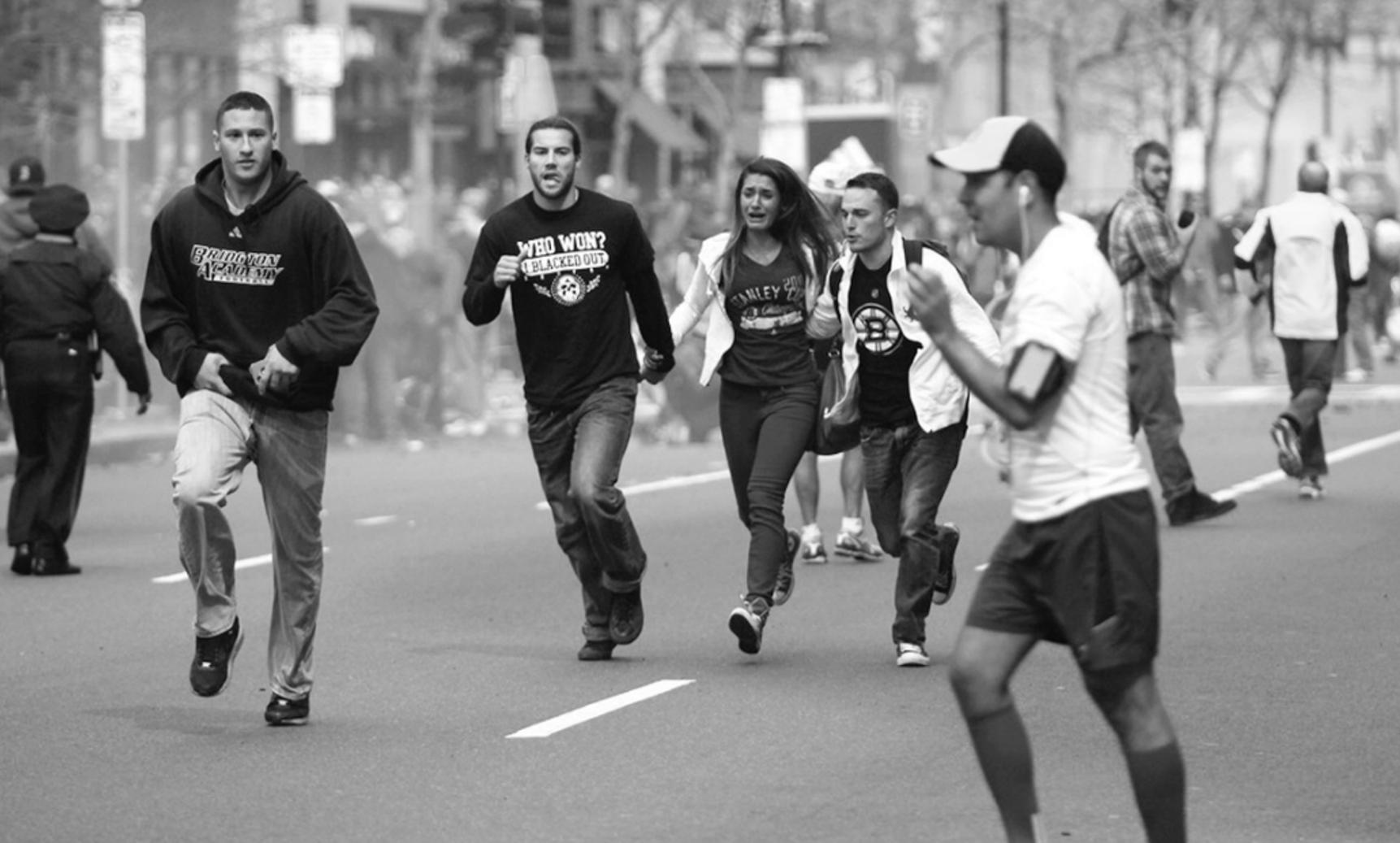
‘It’s my love
his
BY KAYLA BALTAZAR Managing Co-Editor
Living on the first-ever co-ed floor of Warren Towers, formerly known as 700 dorm, going to class at the School of Public Communication and eating latenight meals at the Kenmore Deli Haus — all things Gary Goldstein did when he was a freshman at Boston University.
BU alum Goldstein entered his first semester in 1974 and graduated from SPC, now known as the College of Communication, in 1978. He said he drew from his experiences as a college student to write his third novel, “Please Come To Boston,” which was published in September 2024 and released in audiobook form Feb. 18.
“Please Come To Boston” is a fictional story about Nicky DeMarco, a boy who is entering his first year at BU in 1975. As Nicky navigates his freshman year, he finds himself in a “romantic, friend triangle” with a girl named Lori and a boy named Joe.
“It’s really about [Nicky’s] coming to terms with the possibilities of life and where he might fit in as the years go on,” Goldstein said. “Also keeping in mind that he’s not sure about his sexuality, per se, but he does fall in love with this guy, Joe, and it’s returned to him.”
The book is a dual narrative, flipping between following Nicky in 1975 and in the present-day, where he returns to Boston for the first time since graduating and is reliving the nostalgia of his college days.
Goldstein knew he wanted to write something “authentic to [himself]” and knew that since he remembered his college days really well, he could write a story that would be applicable today.
“This book really was about living your authentic life … and what happens when you do and don’t live the life that you’re really kind of charted out to have,” Goldstein said. He noted how specifically for LGBTQIA+ community members, authenticity was hard to reach, “because you didn’t know you could.”
Mark Krone, a friend of Goldstein’s who graduated from BU in 1985 and previously worked in BU admissions for 36 years, said he himself has “a great deal of affection for BU” and that “Please Come To Boston” was “very true to life.”
“It was very much the way it felt to be there, to be just starting in college with a whole new group of people exploring Boston and people exploring their sexualities too,” Krone said. “It was all new to us. But in 1975, it was a very different time for queer people then.”
In the book, Nicky lived on the first co-ed floor of 700 dorm, now known as Warren Towers, similar to Goldstein.
“The wonderful thing [is] that anything can happen in Warren Towers,” Krone, who lived on a different floor in 700 dorm, said. “You meet new people all the time, on any particular night, [and] something can happen that could be bad or good. It’s usually good, and it’s usually eye opening.”
To maintain as much accuracy as possible to the time period, Goldstein also did extensive research on Boston and BU itself by calling old friends, finding old newspaper articles and contacting BU faculty.
Mark Feldman, who graduated from SPC in 1980, was another friend Goldstein called to ask about his memories of BU. Feldman said he would assist Goldstein and help him remember certain places, compare notes and discuss what had changed in Boston.
“It really is an apropos book … because it does bring back memories, and it also brings [the question], ‘If you had to do it over, what would you have changed?’” Feldman said. “But, you know, we can’t. There’s no do overs in life.”
While the story is based on the real-life BU campus back then and has references to ‘70s pop
culture, none of the characters are based on real people.
Goldstein said though a lot has changed in Boston since 1975, there are still many things that take place in the story that any student can relate to.
“Whoever you are, I think people really end up relating to Nicky’s story, because it has so much of the emotional quotient that everybody feels when they start school,” Goldstein said. “It hasn’t changed that much.”
Now, Goldstein lives in LA and writes scripts for film, TV and stage shows in addition to writing novels. He is also a contributing film critic for the Los Angeles Times.
“My time at BU was very, very valuable to me, and very pivotal and incredibly meaningful,” Goldstein said.
“I credit much of the success I’ve had in life, career-wise and emotionally-wise, to my time there. [‘Please Come To Boston’ is] a little bit like my love letter to BU.”

BY ISABELLE ZHANG DFP Writer
When the COVID-19 pandemic broke out in March 2020, Noodle Street Manager Chris Chan started sewing face masks for his employees out of his own cut-up clothes.
Noodle Street, located on Boston University’s East Campus, had been serving customers for over two decades until the pandemic forced it to close for six months. It joined the 44% of Massachusetts small businesses in the area that closed amidst strict lockdown policies.
“We [are] all kind of family, so we try to protect each other as much as [we] can,” Chan said.
Most of his kitchen staff used public transportation and didn’t have access to medical-grade masks, so Chan took it upon himself to protect his workers.
Now, five years after the start of the pandemic, Noodle Street’s business has almost returned to where it was pre-pandemic.
“When it almost comes back to full capacity, we have inflation, we have uncertainty,” Chan said. “People [get] laid off so people [are] in fear.”
For the restaurant, the pandemic was a catalyst for takeout ordering. According to Chan, the amount of takeout orders Noodle Street receives has more than doubled.
Nud Pob, a Thai restaurant on Central Campus, had to rely on online ordering which cut their number of orders in half, according to staff member Cooper
Takham.
Although Nud Pob struggled financially during the pandemic, the restaurant did not fully close its doors, thanks to a Thai community Facebook group.
During the pandemic, Nud Pob created a special menu with Thai dishes that were less mainstream and more time-intensive to “remind [them] of home,” Takham said.
The special menu was exclusively posted to the Thai community Facebook group, where members could order
takeout or delivery.
“We were trying to make [food] for the people who are interested, which is the Thai community that we have in Boston,” Takham said.
Though Nud Pob has returned to its original menu of quicklyassembled meals for students, COVID was a “good time for [the restaurant] to rethink things” to operate more efficiently, he said.
Life Alive, an organic cafe with multiple locations around Boston, continues to see progress with health and safety in the workplace, even post-pandemic.
Heath Taylor, the general manager of its Brookline location on West Campus, said COVID gave them a “heightened sense of and focus on sanitation,” specifically with crosscontamination awareness.
“I’m not saying that COVID gave us that awareness, but it definitely put us in that mindset,” he said.
Seth Gerber, an adjunct professor at the School of Hospitality and co-owner of two restaurants, said businesses that learned to adapt during the

pandemic were the ones that prospered.
“The pandemic highlighted some very big systemic risks and structural risks within the restaurant industry,” Gerber said.
Gerber said issues like immigration and increasing operations costs and issues made owning restaurants especially challenging.
“There’s just a lot more people that are aware of these various challenges and are trying to figure out what role they can play in helping to move the industry forward,” he said.
Gerber’s own restaurant, MIDA, was nearly put under by the pandemic. But in his restaurant management courses at SHA, Gerber said he tries to not overemphasize COVID’s impact on the restaurant industry to his students.
“There’s no reason to hold on to the past in a way where we still think we’re stuck in 2020 [because] ultimately the guest doesn’t really care,” Gerber said. “We can say, ‘Oh, it’s been really hard since the pandemic’… [but] I think the more you talk about it, the more you kind of use it as a crutch.”
Gerber said restaurants “have to move forward, and [they] have to be better than [they] were.”
To Chan, Noodle Street’s survival is thanks to the community they’ve built over the years.
“We see a lot of generations of students,” said Chan, “They graduate [and] come back with their kids … and they still remember us.”
BY SARAH CRUZ AND HOLLY GUSTAVSEN
Photo Co-Editors
In honor of the 55th anniversary of The Daily Free Press, we showcase previous photographers and photo editors and their favorite work for the FreeP.
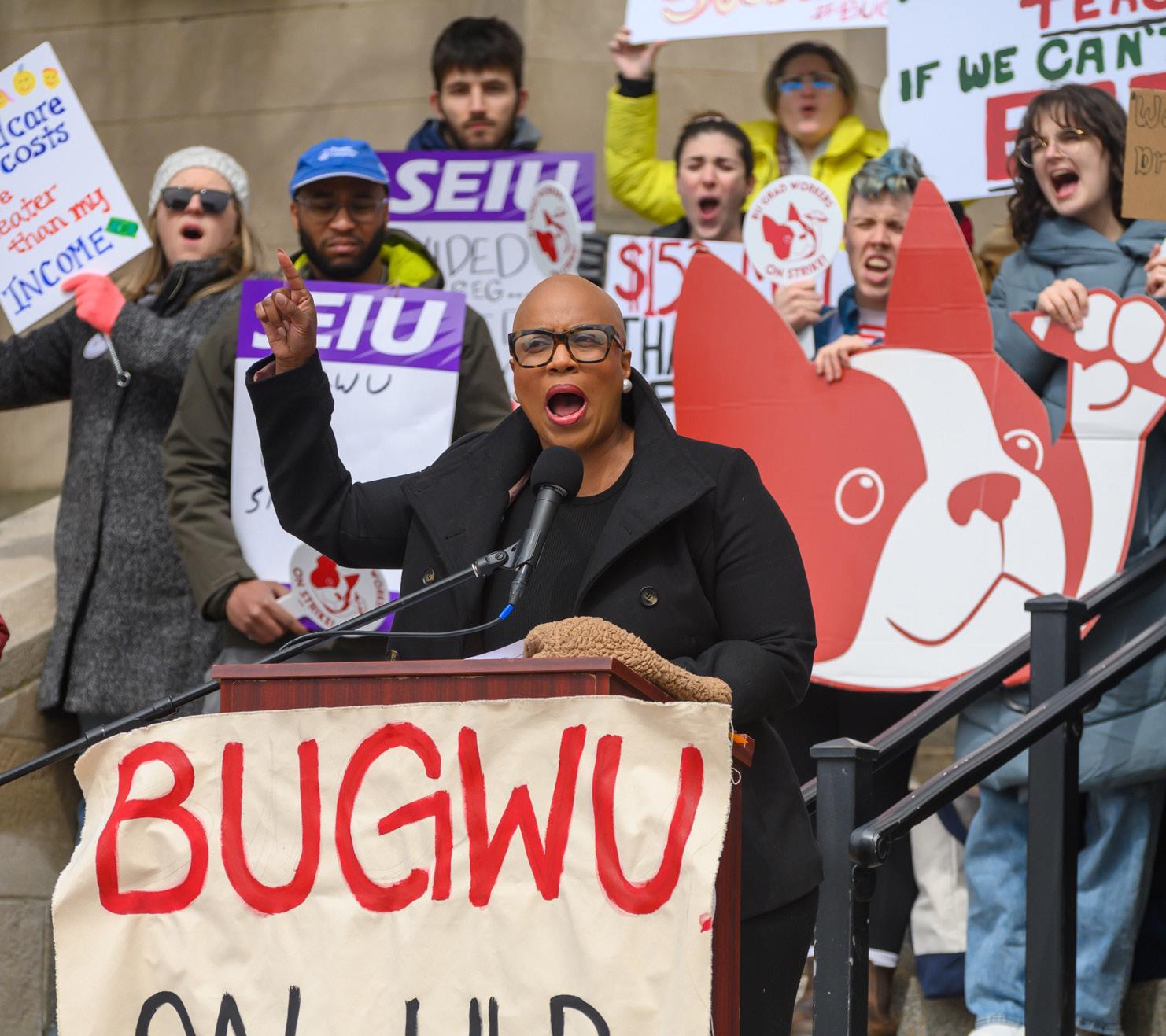
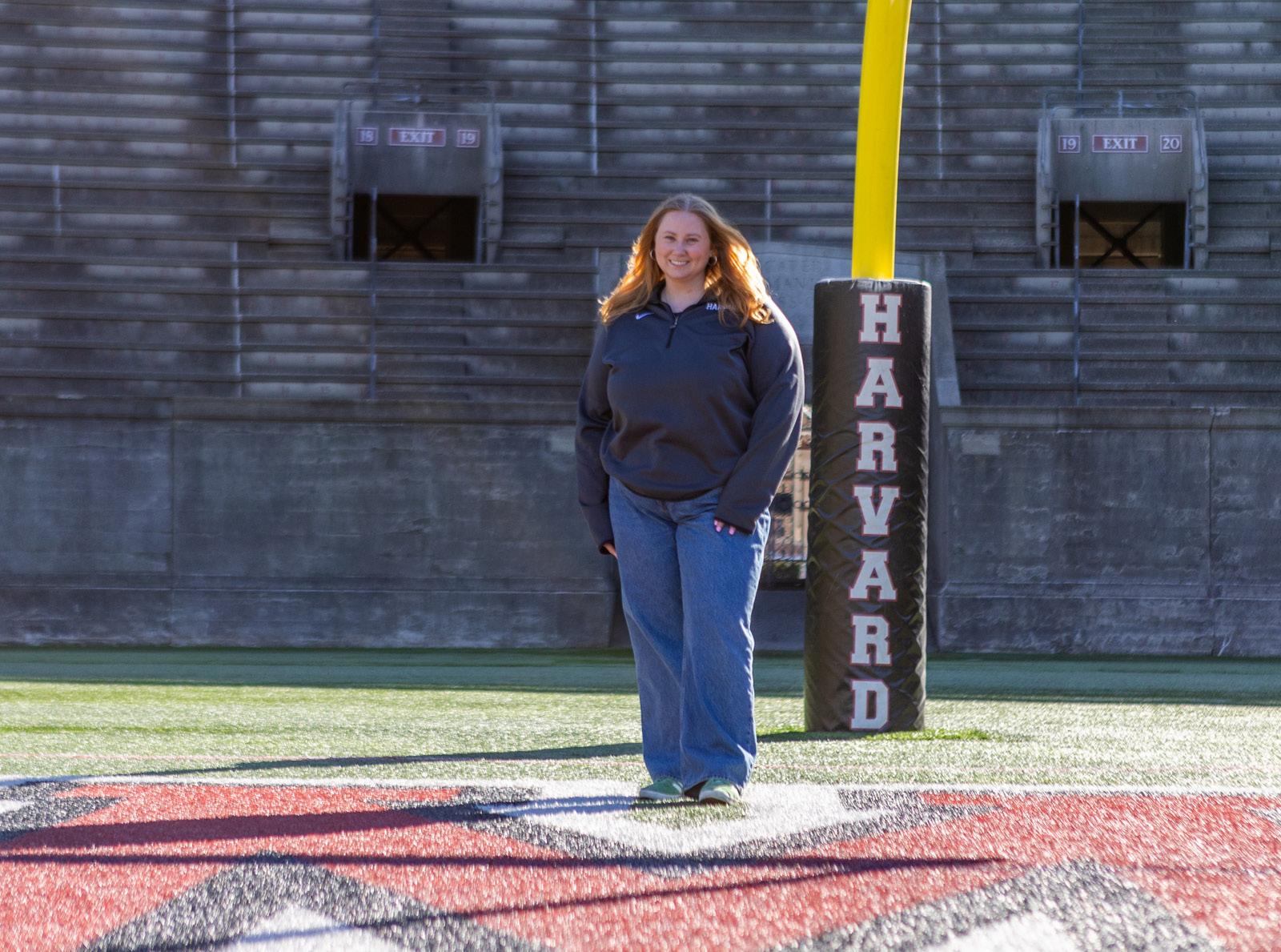

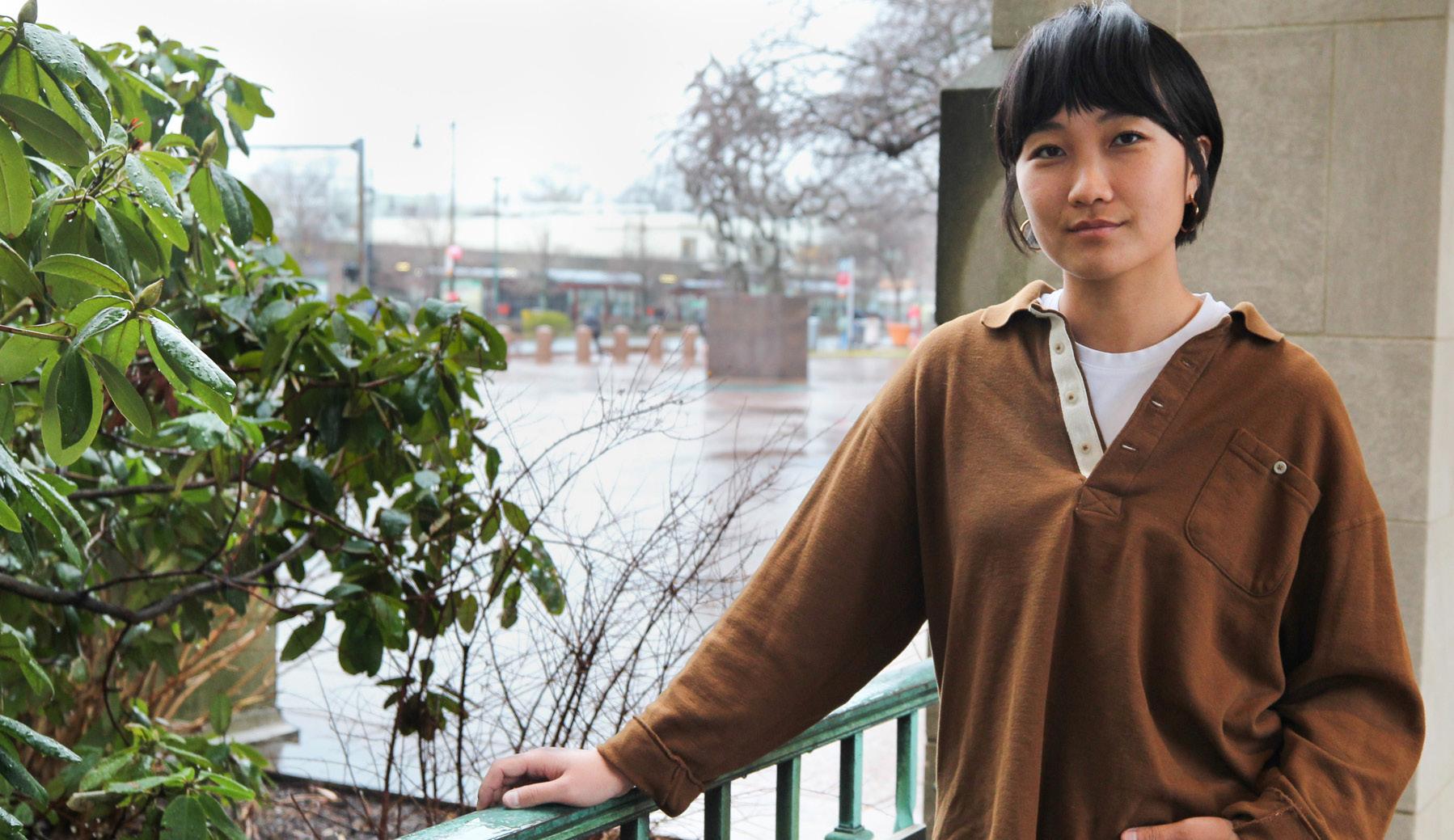
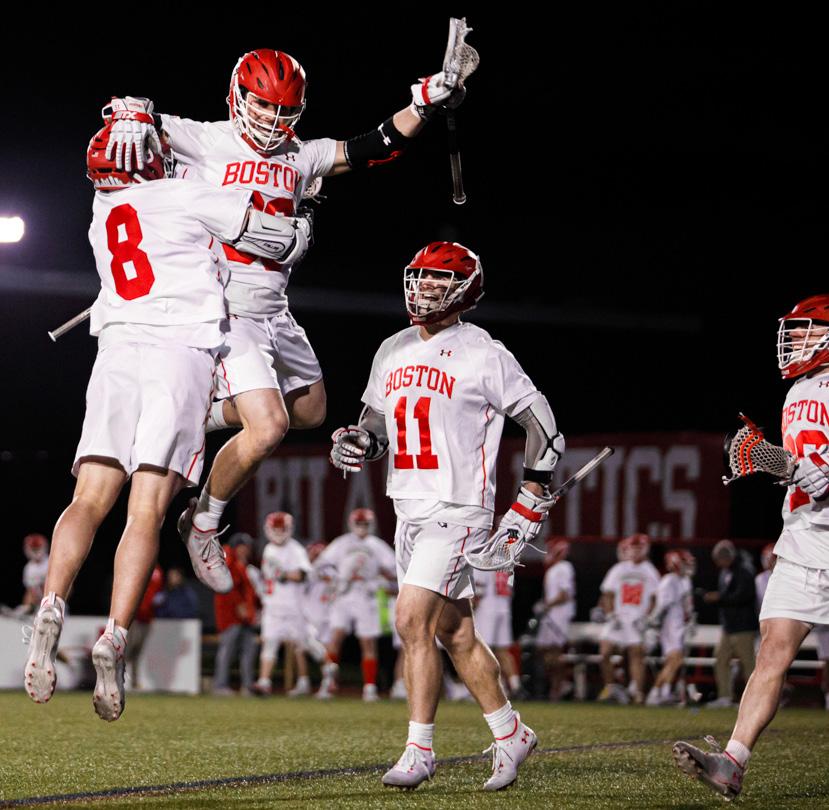

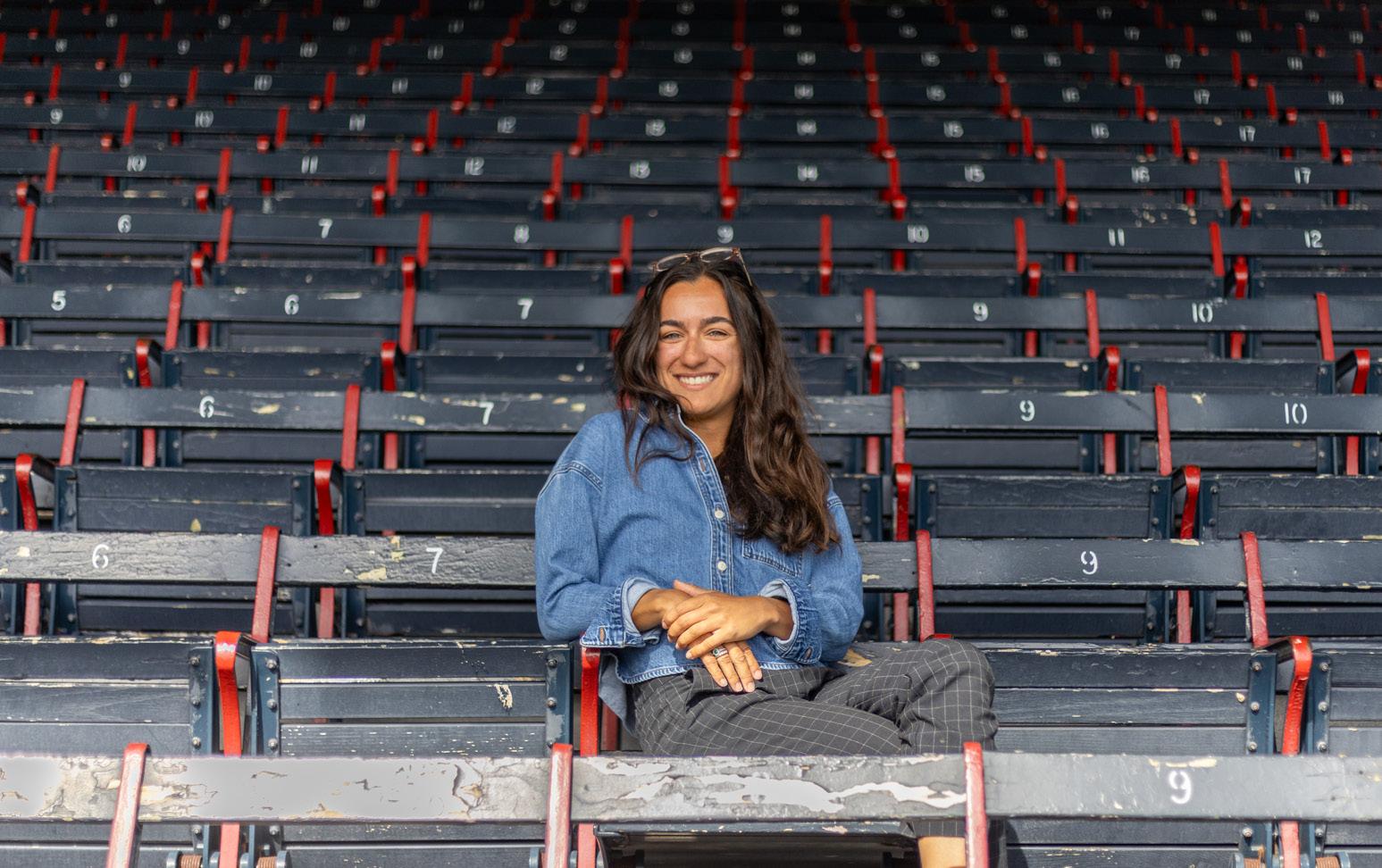
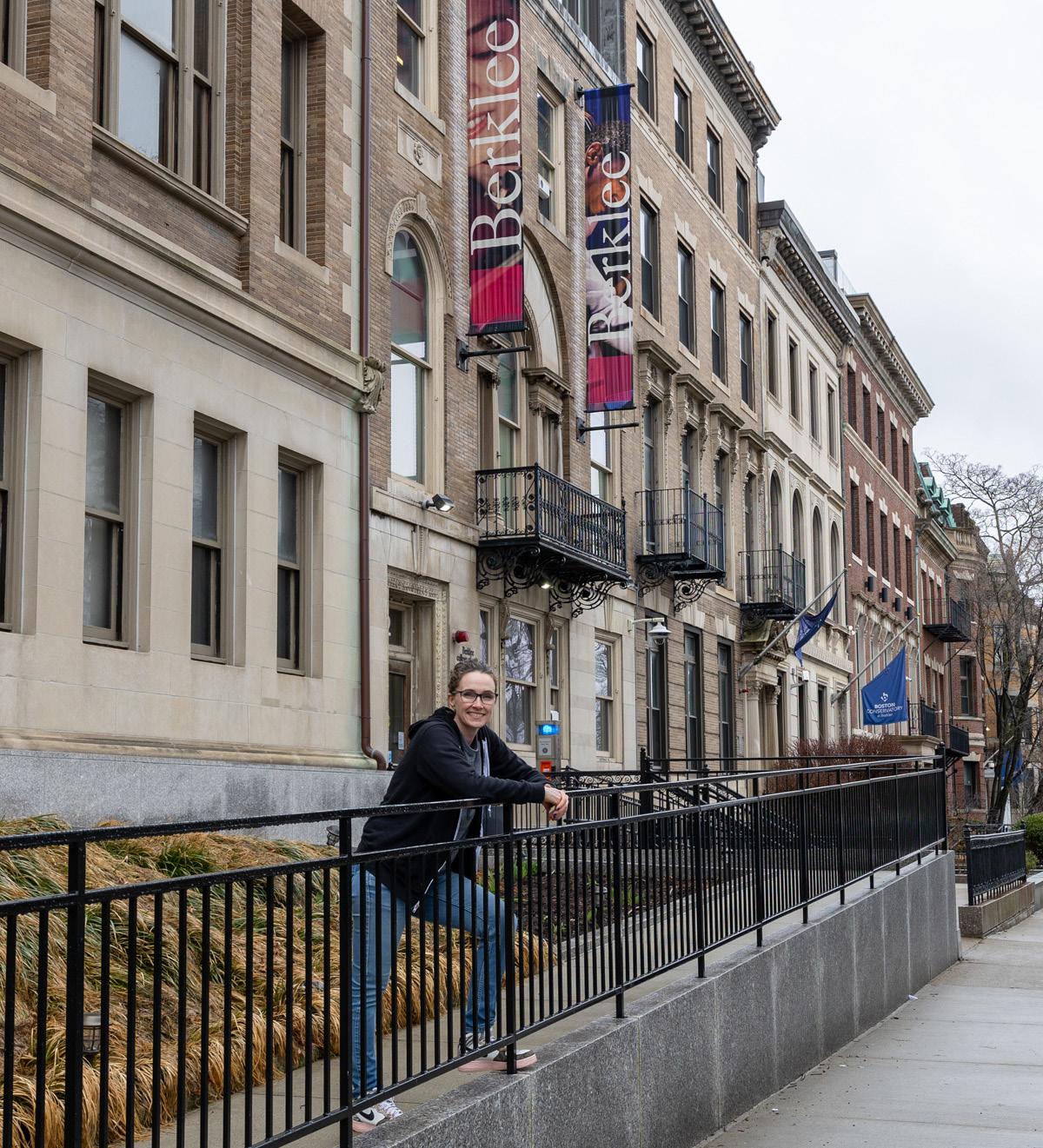
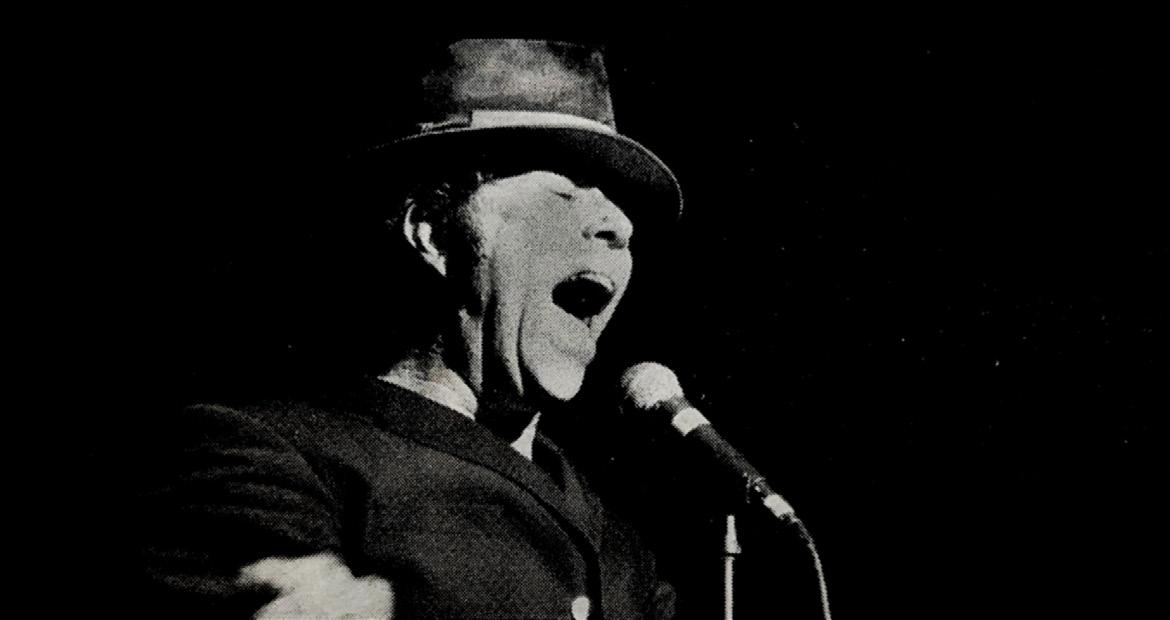
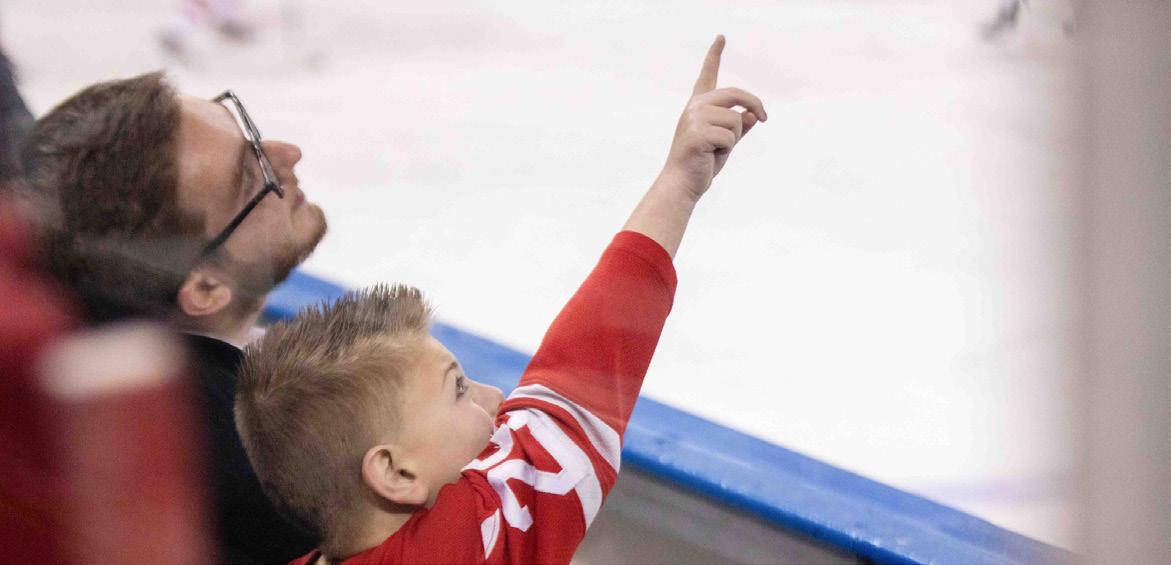

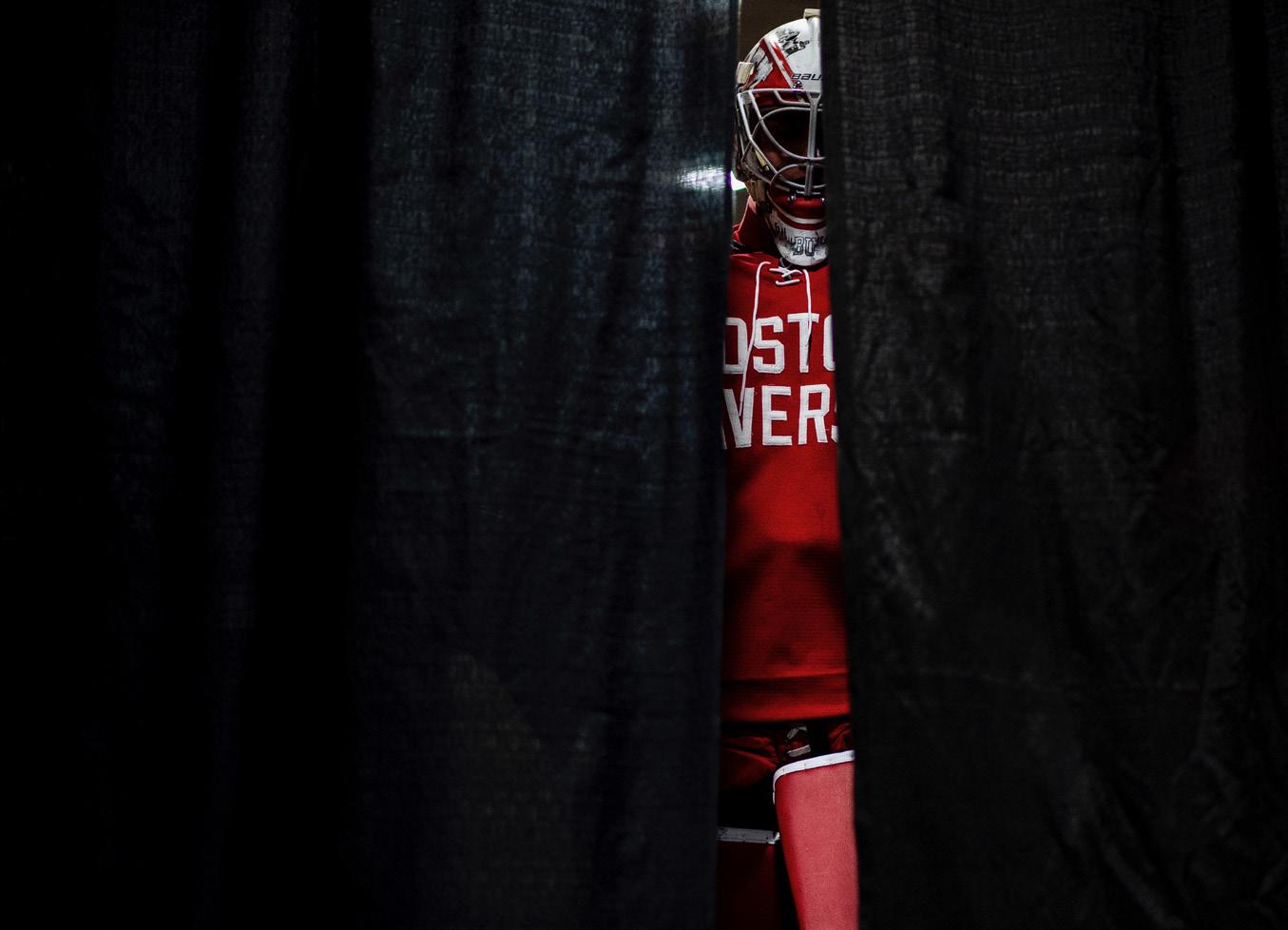
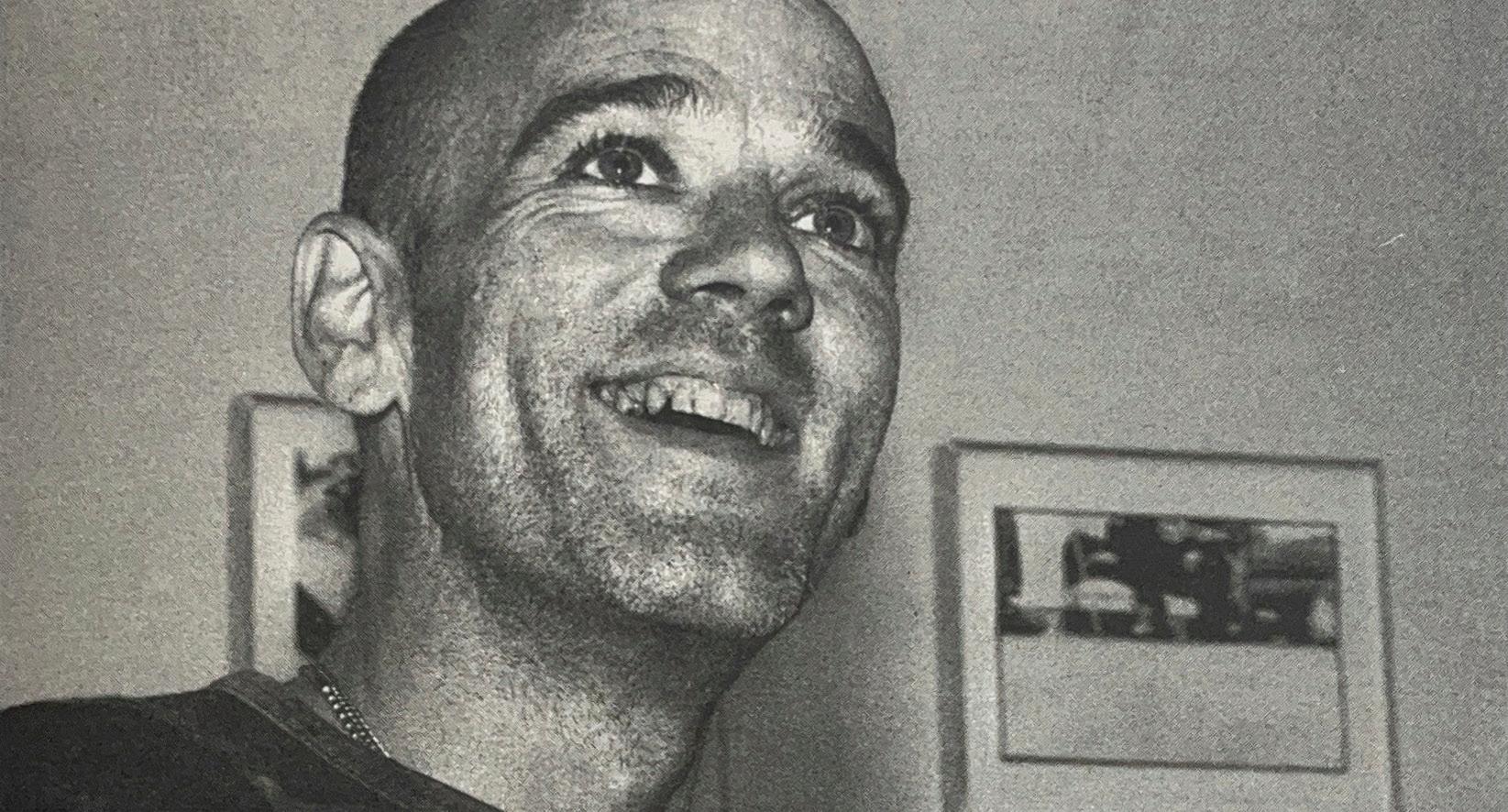
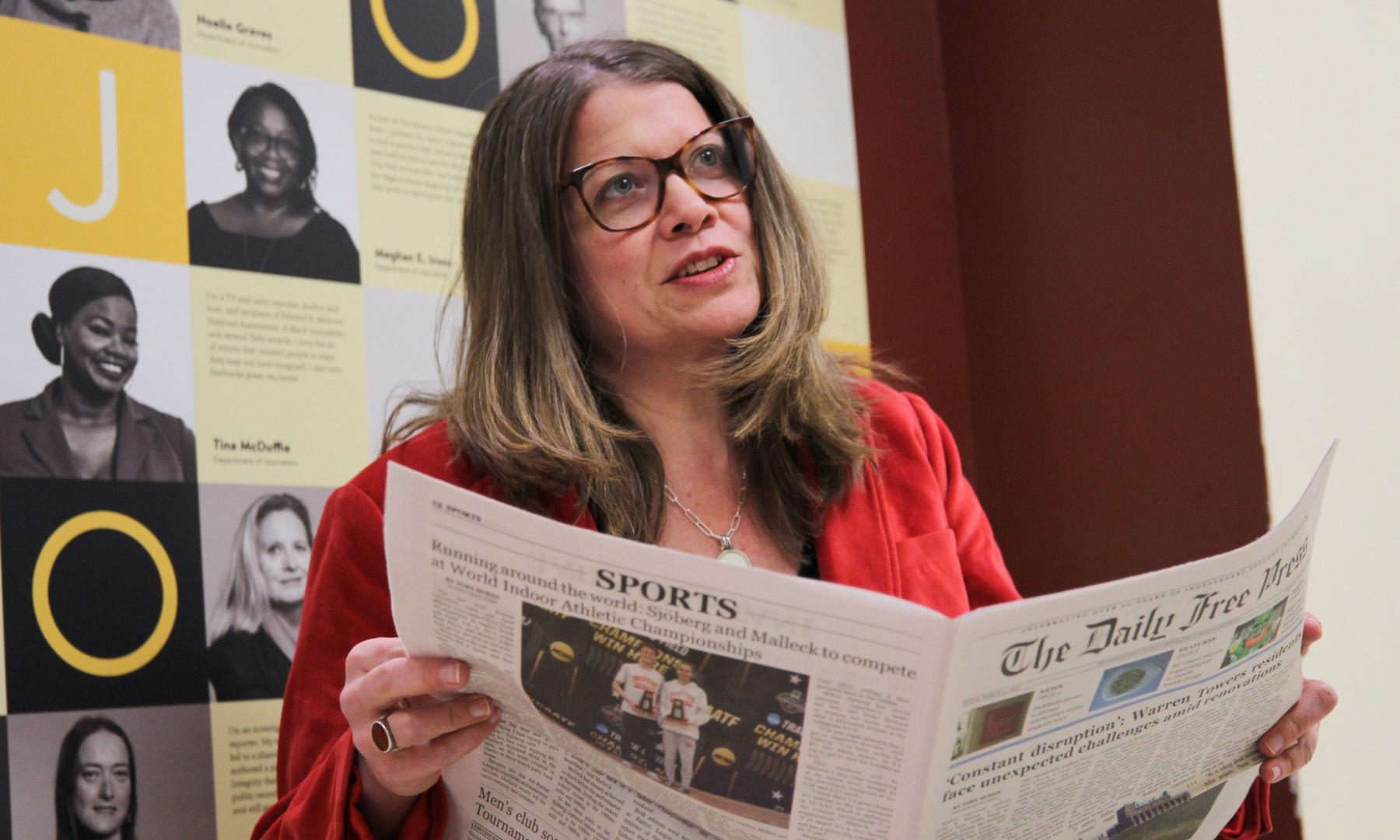
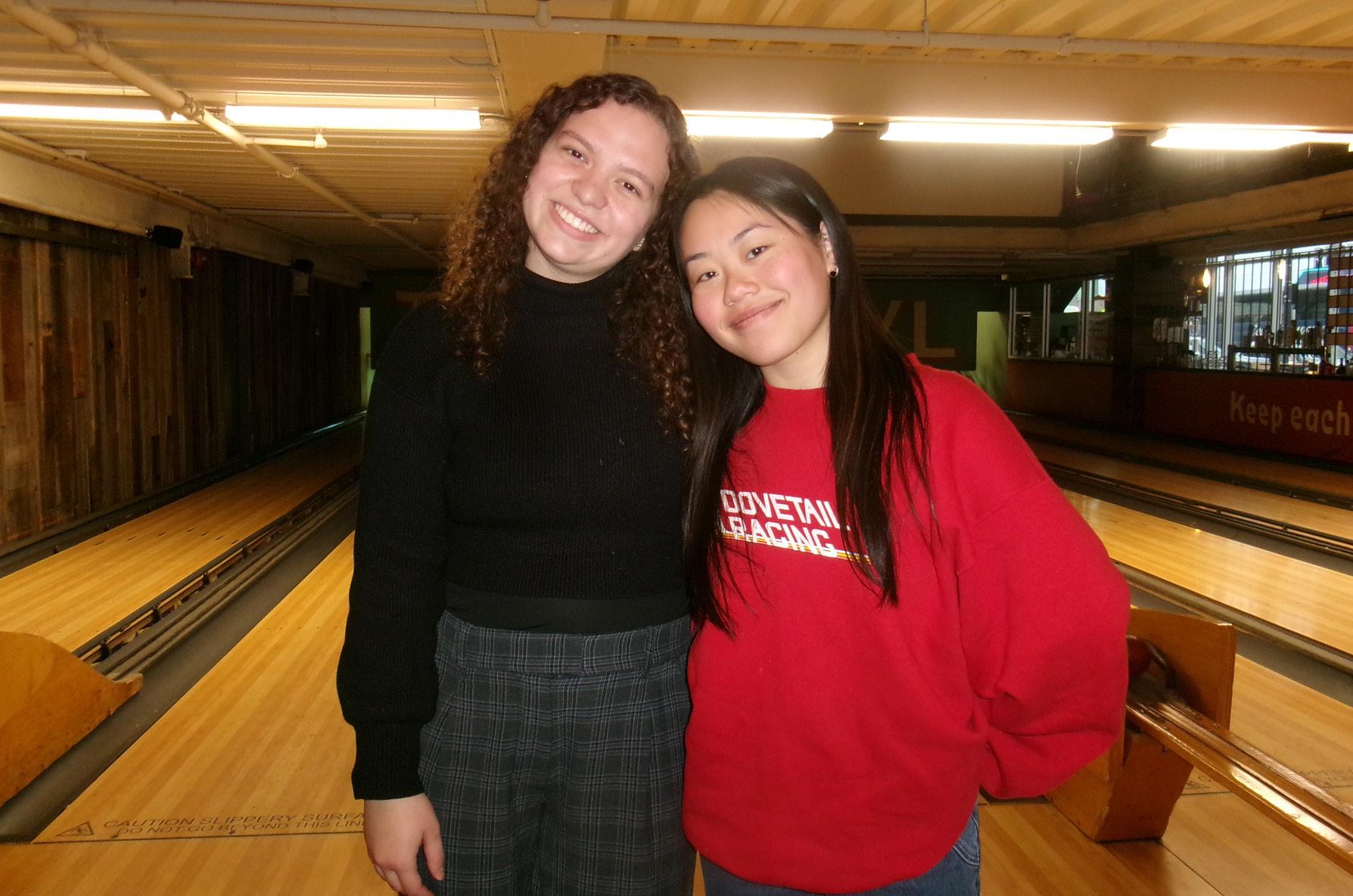
BY ANALISE BRUNO Senior Writer
Dear Abby: I can’t believe it! My boyfriend of two years forgot our anniversary!! He thinks I’m overreacting for getting mad, but I seriously think this is grounds for breaking up. If this date isn’t important to him, what’s a wedding anniversary?
Okay, let’s face it: Anniversaries are a figurative benchmark for relationships.
But it’s more than just a silly day on the calendar because love isn’t a silly construct. That date holds some weight — it marks the day you went from “just dating” to something more official.
On a deeper level, it’s a celebration of everything you’ve built together — how you’ve evolved, supported each other and become a team. So when your
partner brushes it off or forgets, it’s fair to think it’s a big deal.
Humans put a lot of stake in marking and celebrating special occasions that roll around once a year. Whether it’s your 36th wedding anniversary, your 16th birthday or even your 55th anniversary of establishing that one newspaper — milestones come in all forms — these dates are worth acknowledging.
But why does it feel like the end of the world when natural human error or lack of preparedness causes us to forget a very integral date? Have we, as a generation, made relationships so casual we have lost sense of marking milestones?
Is the importance of anniversaries slowly fading away?
Make dating formal again I am so over the nonchalant
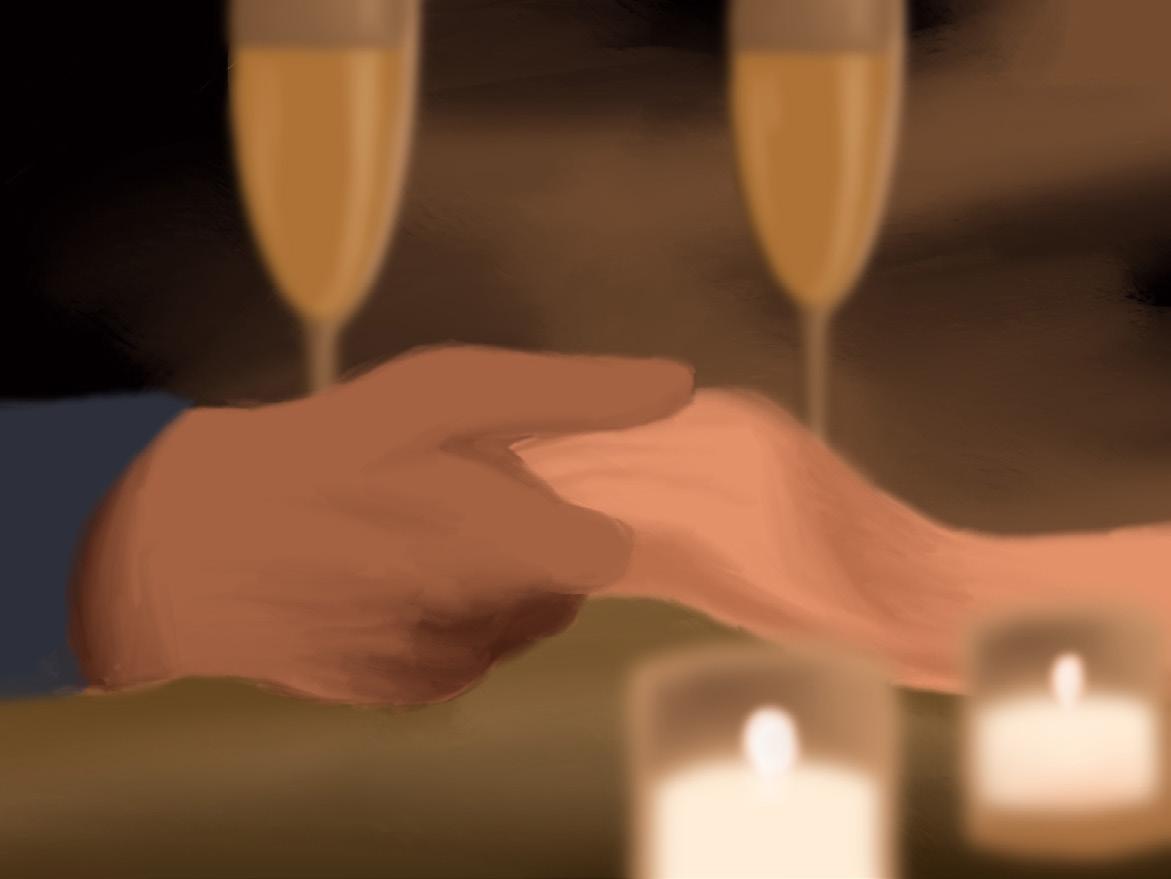
attitude most people today bring to the table when it comes to dating.
Stop waiting three hours to text back. Stop pretending that buying flowers is somehow beneath you. Stop being unclear with plans. Simply stop acting like you couldn’t care less about being in a relationship — because you’re certainly not going to win any hearts that way.
Good things come to those who wait, yes, but good things also come to those who put in the work — that means actually remembering and shelling out for anniversaries.
You don’t have to break the bank, but as a champion of oldfashioned romance, I say make it count. It’s the little things, the thoughtful gestures and the moments that show you’re all in.
Sure, we love a lot of people, but love in a romantic context deserves a spotlight. That’s what makes this connection worth celebrating.
So, when you’re wondering if it’s worth it to remember those key dates, think about this: Love is a celebration. If you’re not going to make an effort, don’t expect anyone to.
Why make a fuss?
You know, I once knew a girl who told me her boyfriend hates Valentine’s Day. He claimed he shouldn’t have to feel “obligated” to take her out because of some holiday — that he could do that any day of the year.
I tried to hear him out, but honestly, his reasoning just felt like a lame excuse for not wanting
to put in the effort unless he was in the mood. To me, that says a lot about how seriously he takes the relationship.
It’s easy to love someone when it’s convenient for you, but what about when it’s expected? That’s the difference between loving someone deeply and just coasting along.
I think the same applies to anniversaries.
Much like Valentine’s Day, anniversaries are meant to be a special day for both of you to reflect on the growth and memories you’ve created together. It’s a day that, if you’re truly invested in the relationship, you both look forward to — and if not, then maybe it’s time to reassess.
Celebrating anniversaries isn’t purely about cake, flowers or fancy dinners. It’s about recognizing that you’ve built something real and meaningful with someone, and that’s worth honoring.
Don’t settle for less
Let me be blunt if I must, but to keep your partnership workable, you’ve got to plant your feet down firmly and lay out what you need.
If you’re like me and you like to celebrate all the little stepping stones — the monthly anniversaries, the first day you met or the first time you said you loved them — then don’t settle for someone who doesn’t.
Relationship preferences also whittle down to how important the little things are. Don’t let some jerk dim your light because they
don’t attach a lot of importance to sentimental things.
To be loved is to be valued Am I saying this is grounds for breaking up? It depends on the context. Humans are prone to error — but it’s how we react to our mishaps that reveals our true intentions.
So maybe hold off on chewing them out.
But also consider their reaction. Did it hurt them to miss such an important date? Do they seem bothered by the fact they didn’t remember something that was not only important to you but also meaningful to your relationship? I think that will tell you how much they really value your time, your feelings and most importantly, you as a partner. Now, I’m not saying you should only hang your hat on these special dates that are few and far between. Part of being in a relationship is still keeping the spark alive during the drone of day-to-day life.
But an anniversary, in any sense, is not just a celebration of time passed, but a recognition of the journey shared between souls. It is a reminder that love, like a tree, grows through the seasons — each ring marking the trials, the joys and the quiet moments that shape its roots.
To forget an anniversary is to forget the significance of growth itself. That love is not static but an evolving process — one that requires intention. In celebrating love, we affirm our commitment not only to the past but to the future we are creating.
Twenty years ago, The Daily Free Press published an editorial accusing the Boston University Police Department of “racial profiling” and a “lack of skill.”
The piece outlined the 1984 killing of 19-year-old Christopher Dignan by a BUPD officer, detailing double-standards extended to University police and noting their routine targeting of minorities on BU’s campus.
According to the original editorial, BUPD was considered a “joke” by the rest of Boston’s law enforcement — a coalition of security guards responsible for slapping college kids on the wrist for petty antics.
Since the editorial’s publication, BUPD has been involved in another killing — the 2015 shooting of Santos Laboy by a Massachusetts state trooper while he was being chased by BUPD on the University’s campus.
The Daily Free Press has been increasingly critical of BUPD’s actions and activities on campus in the years since, paralleling an increased national scrutiny of the violence and implicit biases in policing following the murders of Breonna Taylor and George Floyd in 2020.
Another editorial, published in 2021, claimed that BUPD is not equipped to protect the safety of all students due to implicit and explicit biases in the force. The piece suggested an abolitionist framework to increase student safety — one that redirects
resources to directly address the roots of campus safety concerns rather than simply reacting to them.
While campus policing is almost ubiquitous across the country — 75% of universities have armed officers with the power to arrest — that does not mean these systems should be accepted uncritically.
Some other universities have even begun to defund their campus police departments and redirect these funds towards other safety initiatives. Following the murder of George Floyd by Minneapolis police officer Derek Chauvin, the University of Minnesota stopped contracting the department for security at campus events.
this criticism in mind? Given changing perceptions, do we move forward with divestment or work to build a better relationship with campus police?
shifted dramatically since the initial editorial’s publication, as it has actively worked to
develop a more approachable reputation.
Last year, the BU police department introduced a wellness dog named Bean, who has amassed an impressive 8,200 Instagram followers compared to less than 3,400 on BUPD’s account.
Although undeniably appealing to students, this tactic could also be considered manipulative. It leads to the association of an adorable puppy with police presence on campus — which, as previously mentioned, does not have a spotless history.
On the topic of social media, BUPD has been strategic in its attempts to change its image and shift the way
BU students perceive its officers by featuring posts platforming female officers, most recently for International Women’s Day on March 8. It has also focused several posts on officers of color, which is notable, considering the writers of the 2005 editorial claimed anecdotally that they had never seen a Black BUPD officer.
Additionally, BUPD has shifted to pointing students toward “wellness” resources, rather than emergency ones, seemingly to emphasize police officers are not only available in the case of an emergency.
The department regularly hosts events like “Coffee with a Cop” during midterm season, allowing students to chat with officers in a
decreased significantly between 2021 and 2023. Most notable were instances of stalking, which decreased from 16 to five.
However, crime statistics should be taken with a grain of salt, considering that students may be fearful to report crime at all, especially hate crimes and sexual assault. Furthermore, the data doesn’t reveal whether the initial issues about racial profiling raised in the 2005 editorial have been addressed.
But has any of this image maintenance manifested in changes in the overall safety and
According to a BUPD 2024 security report, several reported crimes on the Charles River Campus

At a time when law enforcement has been manipulated to silence dissenting political voices on college campuses, such as the arrest and detainment of proPalestine protester Mahmoud Khalil, it’s important to question the potential deployment of campus police as a weapon of political censorship.
Superficial actions like social media posts and wellness dogs can be the first steps in leading the way to structural change, but only if BUPD takes the time to listen to the needs of the students it purports to serve and protect. Looking ahead, we can’t let the positive optics of approachability BUPD has developed for itself in recent years prevent us from holding it accountable. Developing a better relationship between students and BU officers is a net positive, but comfortability is a slippery slope into complacency.
This Editorial was written by Opinion Co-Editors Ada Sussman and Ruby Voge.

Kayla
Brendan Galvin, Editor-in-Chief
Gabriella
“For me? You shouldn’t have!”
Constructor’s Note: Happy FreePiversary! Fifteen answers in this crossword correspond to the traditional gift for the clue’s ordinal.
1. “As do I”
5. Enemies, slangily
9. Therefore
13. Semi-aquatic animal in the Charles
14. Orgs. for involved moms and dads
15. ___stone, 85th (1/15)
16. Long periods
17. Egyptian snakes
18. Famous Fanning or King
19. See to 20. Ye ___ Shoppe
21. Street or Pic follower
22. Catches some Z’s
24. Issuer of Platinum or Diamond awards, for short
26. Side for 49-Across
29. Regulations, as for a student club
33. 10th (2/15)
36. 2nd (3/15)
38. Stop taking a class
39. Cease 22-Across 41. Muscles you might work on at Fitrec, for short
42. Wealthy New York Fur Family
43. ___ Fides
44. Famous cracker?
46. Like a fox
47. “Make it ___!”
49. Offerings from El Comal, maybe 51. “___ My Ride”
53. Clan-related
57. Hawaiian hello
60. Kill when inflated!
63. $: Dollar, £: ___
64. Big ___ (Nickname for Red Sox Player David Ortiz)
65. “All’s ___ in love and war” (Idiom dating back to the 16th century)
66. 14th (4/15)
67. Swear
68. Dog’s yips
69. Put down, for a price
70. 13th (5/15)

71. Voice of an Aural Fixation or Chordially Yours member, maybe 72. Black + White
DOWN
1. 11th (6/15)
2. Make up, religiously
3. Shawn ___
4. Um alternatives
5. 14th (gemstrong) (7/15)
6. Vet’s condition
7. 1st (8/15)
8. Drafty U.S. Agency?
9. Jewels for someone
celebrating the Freep’s anniversary this year (55!) (9/15)
10. Part
11. 50th (10/15)
12. George Washingtons
13. Wild things to sow?
20. Capital of Norway
21. Low bank of reef (Ask an earth & environment student!)
23. Clip
25. Son of, in Arabin
27. ___ Market
28. Attempt for a Red Sox player
30. College of ___ and Sciences
31. 7th (11/15)
32. Agile for your age
33. Things to open or keep
34. 6th (12/15)
35. The ___, the Pinta, and the Santa Maria
37. Workers’ welfare org.
40. 45th (13/15)
42. Love, en La Paz
44. FitRec, for example
45. Segments of a play
48. ___ Mater (Fibrous material in the brain - ask
a pre-med student
50. 25th (14/15)
52. 30th (15/15)
54. Plant life
55. Collection
56. Places
57. “Be ___!” (“Help me out here!”)
59. Org. of oil-producing nations
61. For 15 answers, each is the traditional ___ of their respective clue
62. About 65. Org. that might investigate Logan
65. Museum in Fenway, for short
BY ETHAN POTT Contributing Writer
For the Boston University softball team, the 2025 season is a special one.
Not only do they stand undefeated at the top of the Patriot League standings as of April 3, they’re favorites to take the regular season title for a seventh year in a row, all while the leader and mentor that guided them to these results reaches a significant career milestone.
This season marks head coach Ashley Waters’ tenth at the helm of the program, a decade in which the Terriers have experienced an
unforgettable streak of success.
“I think BU is a really special place and I’m grateful every year that I get to coach here,” Waters said. “When you’re in Division I athletics, you can have a career with some longevity or your career can be really short. It’s an honor to get to 10 years.”
Waters grew up playing softball in Amesbury, Massachusetts, just 40 miles north of Boston. After graduating high school, she found a place at the collegiate level, playing four years as an infielder at the University of Maine.
After graduating in spring 2009, Waters began working as
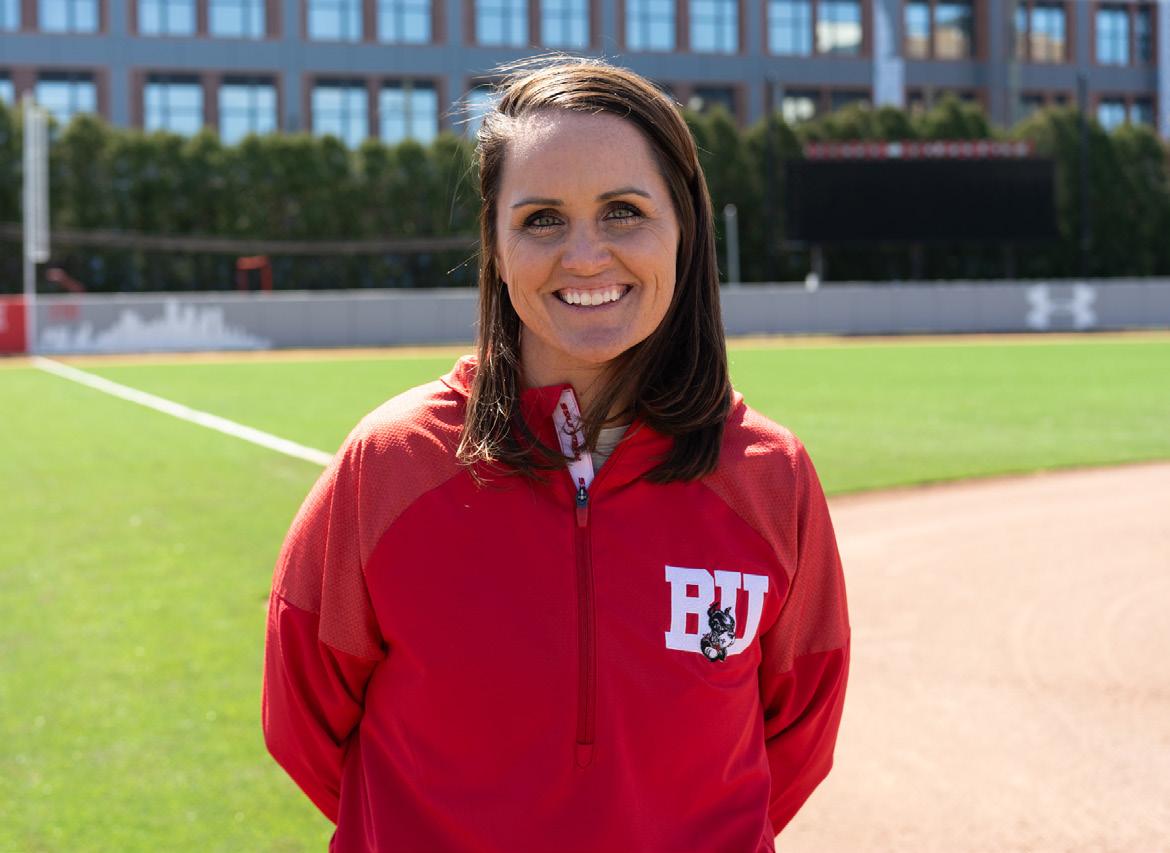
an assistant coach at her alma mater while gaining experience coaching youth softball in a variety of positions around New England, both at the under-18 and collegiate levels.
She simultaneously coached while pursuing a semi-professional playing career with the Stratford Brakettes, winning four Women’s Major Softball national championships in her time there.
Waters returned to the Boston area after being hired as an assistant coach by Harvard University, and in 2016, she accepted her first head coaching job at BU.
“There’s been so many special moments,” Waters reflected. “The first time we were ranked in the top 25 and some of the championships have been incredibly special.”
This success came immediately for Waters, leading the team to the NCAA tournament in her inaugural season. Since then, the Terriers have captured six Patriot League regular season titles and reached the NCAA tournament as many times, setting numerous conference, team and individual records along the way.
She hasn’t built the Terriers’ success alone, however.
According to Waters, the team — and her own coaching journey — wouldn’t be where it is today without the help of the people around her. “I love working for [Athletics Director] Drew Marrochello,” she said. “He’s been
an incredible mentor.”
Marrochello was responsible for hiring Waters ten years ago, at the time expressing how Waters was someone who “checked every box” in their search.
Waters praised her associate head coach, and wife, Becca Carden — who she has worked alongside her entire decade-long career at BU — for her unwavering support that’s driven both Waters and the team forward over the years.
“Becca has been with me from the start. Our idea was to build this together and make it incredible,” Waters said. “The support of the BU administration to allow that has been very cool, and I wouldn’t be successful without her.”
In return, Carden spoke highly of Waters’ leadership and coaching style while acknowledging her influence on Carden’s own journey.
“Working with [Waters] is an unmatched experience,” Carden said.
The duo has been consistently recognized by the National Fastpitch Coaches Association as the Northeast Regional Coaching Staff of the Year since 2022, a testament to how they work together to elevate the product on and off the field.
Carden described Waters’ ability to bring stability and inspiration to the team, saying, “We are very different so we’ve been a good balance for each other. She’s not
just on you for the bad, but she’ll let you know if you do something awesome. [She pushes the players] to be the best softball players and people they can be.”
Waters’ messages and motivation have been lauded by her team, many of her players crediting her with their growth on and off the field.
“She’s always pushing me to be better. She never lets me waver in that and always continues to push us,” said senior outfielder Tyesha Williams, who offered nothing but strong praise for her coach of the last four years.
“She tells us to leave the place better than you found it,” Williams added. “I’ve tried to embody that throughout my four years here.”
Fortunately for the Terriers, their coach isn’t going anywhere anytime soon, and the program will hopefully continue to thrive under a leader who consistently echoes that sentiment.
Waters, who in 2022 earned her master’s degree at the Wheelock School of Education, hopes BU will be her personal and professional home for the rest of her career.
“The best for all of us is yet to come,” Waters said. “I’ve stayed here so long because I don’t want to coach any other kids than the Boston University kids. I always wanted to leave this program better than I found it as it was my first head coaching job, and I hope it’s my last.”
BY SAM ROBB O’HAGAN Boston Hockey Blog Writer
The first thing Lindsay Bochna noticed when she took her seat in the enormous press room under Wisconsin’s 17,000-seat basketball arena was the lights.
The forward sat alongside fellow graduate assistant captain Julia Shaunessy and head coach Tara Watchorn, perched in front of an NCAA ICE HOCKEY backdrop.
They walked through a maze of hallways to reach the press room under the state-of-the-art Kohl Center after playing at neighboring LaBahn Arena.
Now, they represented the Boston University women’s hockey team in a postgame press conference.
It was here where the No. 11 Terriers’ miraculous season eventually ended. A 3-1 NCAA tournament loss to No. 9 Clarkson took them out of the regional semifinal six months after they declared their aspirations to reach the national stage.
Everyone thought they were crazy then, and no one — according to Shaunessy, at least — gave them a chance that night.
So there was not so much as a whimper — let alone a tear — as Shaunessy, Bochna or Watchorn spoke. The latter was asked for an opening statement and paused for almost five seconds before giving one, and not because she was solemn.
“Proud,” BU’s second-year head coach said, “is an understatement.” Shaunessy, next to speak, was asked about her emotions when
the final buzzer sounded on BU’s season. In her first four years, she never finished with more wins than losses. In year five, she bowed out with 24 victories, 12 defeats, a Hockey East Champions ball cap and an NCAA patch on her jersey.
“Obviously it’s tough,” she said, “You see your hockey career kind of ending in front of you.”
Watchorn made a habit this season creating buzzwords and catchphrases to describe the state of her team, including “dipping our toes in the water,” a metaphor for being tentative in a high-pressure game — and it was what Watchorn was worried about the day before as her team prepared to play a blue blood non-conference opponent.
“We talked about how the biggest opposition is the unknown,” Watchorn said. “And it’s kind of been that all year.”
Clearly that was what got to BU in the first period against Clarkson.
The Golden Knights opened the scoring five minutes in with an unstoppable solo effort in transition, then BU’s secondranked penalty kill came up short, conceding just 16 seconds into its first appearance of the game. The Terriers were eventually outshot 13-3.
BU, in its first NCAA appearance in a decade, was a shell of itself against a three-time National Champion program coming off a Frozen Four last season.
“Their pace of play was faster than we’re used to,” Shaunessy said. “It just shocked us a little bit.”
BU’s game, Shaunessy has said, is built on its physicality, but against a quick team that hunts space and attempts to isolate its
players, the Terriers played into the Golden Knights’ hands in the first period. The Terriers got away from their game which cost them two goals.
“We were overcompensating,” Shaunessy said. “Trying to let our feet do the work when we can let our body do the work.”
However, two more Watchorn buzzwords never waivered: “professionalism” and “debrief.”
“I haven’t seen a group of women come together like this, solve problems like this. It’s just unheard of,” Watchorn said postgame. “They’re professionals, and they have the task they want to accomplish, and they go to work.”
The result? A 4-0 win over Northeastern a day after a 4-0 loss, a victory-worthy effort even in a defeat to UConn on the final day of the regular season and three overtime victories in the Hockey East tournament.
Add the second and third periods against Clarkson to the list.
The Terriers outshot Clarkson 8-4 in the second. In the final 15 minutes of the frame, the Golden Knights — who average 38.7 shots on goal per game, third-most in the country — put just one shot on BU senior Callie Shanahan.
The Terriers had real chances themselves, too — most notably Riley Walsh hitting the post off a feed from Lilli Welcke.
A couple costly penalties in the third period stunted the momentum BU built in the second, but Shanahan made several miraculous saves in the first half before the Terriers surged in the last 10 minutes. Bochna eventually poked home a net-front rebound
with four minutes to go to give BU a chance, but Clarkson sealed it with an empty-netter.
“We stopped trying to play into their game, which was just trying to isolate players,” Shaunessy explained. “Instead, working as a unit … Just playing more physical than we did in the first because we let that slip a little bit.”
But now, here the Terriers were, against easily the strongest opponent they’d played all year on by far the biggest stage, watching the lightbulb go off during a single, 15-minute intermission.
“It used to be Friday-toSaturday, and it got to period-toperiod, and it’s just remarkable,” Watchorn said. “I’ve never seen anything like it, and it’s why they’ve been so successful.”
When the Golden Knights officially sealed her team’s fate with 35 seconds left in the third,
Watchorn turned to Shanahan, who stood beside her on the bench, and nodded her head. Shanahan slipped through a couple teammates, hopped over the boards and skated back to her net.
Moments later, the final buzzer sounded. Watchorn hugged each member of her staff as players made their way to Shanahan. They showered her with pats on the helmet before heading for the handshake line.
Eventually, the players gathered at center ice and acknowledged family, friends and the university pep band that made the trip, before filing into the tunnel under a chorus of applause.
There were no players in tears, none frozen on the ice after their season — or in many cases, their career — ended.
“We surprised ourselves again today,” Watchorn said.
